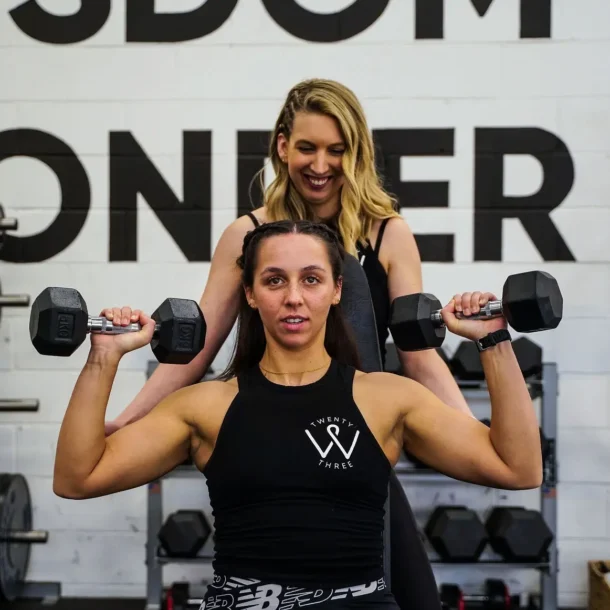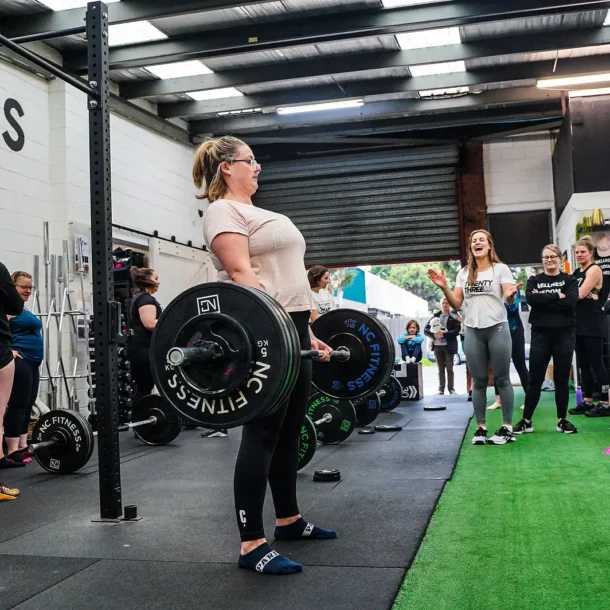
There is a distinct difference in the way you see a novice and a more advanced lifter set up on a barbell. A novice lifter will quickly approach the bar, paying little attention to its height, place the hands and rush to move it into position to start the exercise. While this might be okay if you are moving from exercise machine to exercise machine, this is no way to get the most out of your barbell work.
In fact, you ability to progress is predetermined by your first touch on the bar. Therefore taking time on your set up will go a long way in ensuring that you can progress and stay injury free.
In this article, I will discuss optimal grip and hand placement in your back squat, deadlift and bench press so you can be moving heavier weights and not reinforcing poor habits.
Back Squat
Once you feel confident in your lower body range of movement when squatting, it is now time to add some weight. If you are performing a back squat, the bar should start in a power rack or squat stand. Sorry… If you have been doing these in a fitness class, by taking the bar from the floor to behind your neck, a correct set up will feel completely forign.
When you first start out you are led to believe that the bar is being held on your back with your hands. While this is possible with a 10-20kg bar, this error will not allow you to squat safely with anything more than this.
First touch… Take an even grip on the bar by pressing the heel of the hand into the bar. The thumbs should be placed on top so that the wrist can be held straight. And the bar should be ‘sandwiched’ into the ‘shelf’, between you wrists and posterior delts. This action will help tighten the muscles in your back, lift the chest and lock the upper body into an isometric hold. This tightness on the bar will ensure that you are not leaking energy in your squat, nor dumping the weight into your wrists.
I once had a coach that told me to grab the bar ‘like someone was stealing my purse’. Obviously this coach was male… and did not realise the sexist generalisation behind his comment. But the point he was trying to make was to grip the bar like it mattered.
The deadlift starts at mechanically the hardest part off the movement and requires the most amount of force to breka the bar off the floor. It starts with your grip.
Grip strength can be a limiting factor when looking to add more weight to the bar. Using wraps or mixed grip can help, although I caution many new lifters to stick to a more conventional grip until they reach loads of 85-90+% of their 1RM. This is because it is important to spend time building strength in your forearms and yes, calluses are all a normal part of training.
Calluses protect the hands from blisters and tears, however excessive callus are more prone to tear and this can really ruin your lifting mood, training session and day!
If the bar is gripped correctly, callus formation is kept to a minimal, the skin gets tough and it less likely to build up a heavy ridge which is prone to ripping.
When you set up you grip, simply grip the bar further down towards your fingers. This will stop the formation of the skin fold that is then pinched when you start by incorrectly grip the bar in the middle of your palm.
Note: While wearing gloves might stop calluses, they also reduce grip security. If you want to lift well and heavy, acknowledge that small calluses are all part of it.
Firstly, the thumb should always be around the bar when bench pressing. A thumbless grip is not a safe grip.
A sloppy set up will also see a lifter grip the bar in the groove of their palm. When they un-rack the bar and hold it above the chest, this encourages the bar to shift back in your hands causing excessive loading in the wrist and may also change the bar path.
The best way to set the grip is to make contact with the bar, with a slight inward rotation of the thumb side down and then lay the fingers down over the bar. This position hooks your thumb around the bar, locks the wrists tight and orientates the knuckles to the ceiling.
These three simple fixes will go a long way to help to load up these amazing barbell exercises with confidence.
Remember that your success is determined at your first touch… so take your time in the set up properly to reap the rewards later.






